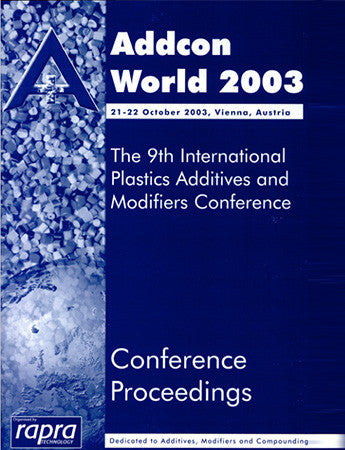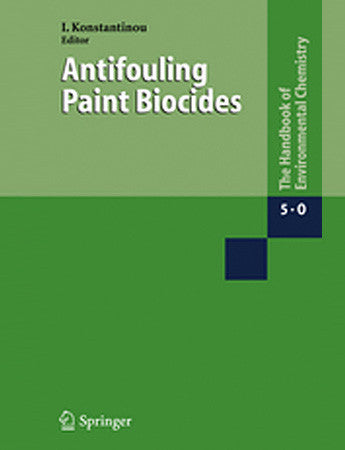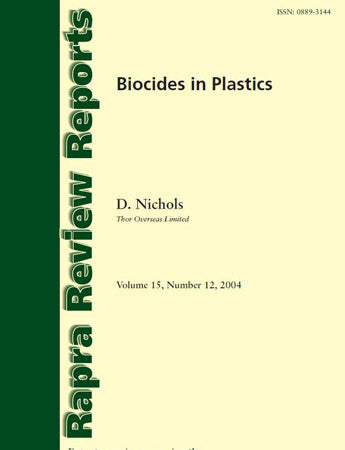Handbook of Solvents, Volume 1, Properties
Each chapter in this volume is focused on a specific set of solvent properties which determine its choice, effect on properties of solutes and solutions, properties of different groups of solvents and the summary of their applications' effect on health and environment (given in tabulated form), swelling of solids in solvents, solvent diffusion and drying processes, nature of interaction of solvent and solute in solutions, acid-base interactions, effect of solvents on spectral and other electronic properties of solutions, effect of solvents on rheology of solution, aggregation of solutes, permeability, molecular structure, crystallinity, configuration, and conformation of dissolved high molecular weight compounds, methods of application of solvent mixtures to enhance the range of their applicability, and effect of solvents on chemical reactions and reactivity of dissolved substances. For more information see TOC.
The main emphasis in this volume is on comprehensive treatment and ease of information use. The first goal was achieved by the selection of authors who are specialists in individual areas. The second goal was achieved by targeting the intended audience, which includes readers of different specializations who need to understand solvents from various relevant views of their applications and effects. This difficult task was fully embraced by the authors, who used their deep knowledge to write about all the important details with the clarity of non-specialized language. This makes this book unique because it allows all those involved in the area of solvents to understand the disciplines involved in this complex, multi-disciplinary subject. The additional goal was to present a synthesis of existing data for immediate use but leaving specific data on individual solvents to the databook containing information on presently used solvents or its database format on CD-ROM which can handle a large amount of information with ease of retrieval.
The main emphasis in this volume is on comprehensive treatment and ease of information use. The first goal was achieved by the selection of authors who are specialists in individual areas. The second goal was achieved by targeting the intended audience, which includes readers of different specializations who need to understand solvents from various relevant views of their applications and effects. This difficult task was fully embraced by the authors, who used their deep knowledge to write about all the important details with the clarity of non-specialized language. This makes this book unique because it allows all those involved in the area of solvents to understand the disciplines involved in this complex, multi-disciplinary subject. The additional goal was to present a synthesis of existing data for immediate use but leaving specific data on individual solvents to the databook containing information on presently used solvents or its database format on CD-ROM which can handle a large amount of information with ease of retrieval.
1 INTRODUCTION
Christian Reichardt, Department of Chemistry, Philipps University, Marburg, Germany
2 FUNDAMENTAL PRINCIPLES GOVERNING SOLVENTS USE
2.1 Solvent effects on chemical systems
Estanislao Silla, Arturo Arnau and Inaki Tunon, Department of Physical Chemistry, University of Valencia, Burjassot (Valencia), Spain
2.2 Molecular design of solvents
Koichiro Nakanishi, Kurashiki Univ. Sci. & the Arts, Okayama, Japan
2.3 Basic physical and chemical properties of solvents
George Wypych, ChemTec Laboratories, Toronto, Canada
3 PRODUCTION METHODS, PROPERTIES, AND MAIN APPLICATIONS
3.1 Definitions and solvent classification
Christian Reichardt, Philipps-Universitaet, Marburg, Germany
George Wypych, ChemTec Laboratories, Toronto, Canada
3.2 Overview of methods of solvent manufacture
George Wypych, ChemTec Laboratories, Toronto, Canada
3.3 Solvent properties
George Wypych, ChemTec Laboratories, Toronto, Canada
4 GENERAL PRINCIPLES GOVERNING DISSOLUTION OF MATERIALS IN SOLVENTS
4.1 Simple solvent characteristics
Valery Yu. Senichev, Vasiliy V. Tereshatov, Institute of Technical Chemistry, Ural Branch of Russian Academy of Sciences, Perm, Russia
4.2 Effect of system variables on solubility
Valery Yu. Senichev, Vasiliy V. Tereshatov, Institute of Technical Chemistry, Ural Branch of Russian Academy of Sciences, Perm, Russia
4.3 Polar solvation dynamics: Theory and simulations
Abraham Nitzan, School of Chemistry, The Sackler Faculty of Sciences, Tel Aviv University, Tel Aviv, Israel
4.4 Methods for the measurement of solvent activity of polymer solutions
Christian Wohlfarth, Martin-Luther-University Halle-Wittenberg, Institute of Physical Chemistry, Merseburg, Germany
5 SOLUBILITY OF SELECTED SYSTEMS AND INFLUENCE OF SOLUTES
5.1 Experimental methods of evaluation and calculation of solubility parameters of polymers and solvents. Solubility parameters data
Valery Yu. Senichev, Vasiliy V. Tereshatov, Institute of Technical Chemistry, Ural Branch of Russian Academy of Sciences, Perm, Russia
5.2 Prediction of solubility parameter
Nobuyuki Tanaka, Department of Biological and Chemical Engineering Gunma University, Kiryu, Japan
5.3 Methods of calculation of solubility parameters of solvents and polymers
Valery Yu. Senichev, Vasiliy V. Tereshatov, Institute of Technical Chemistry, Ural Branch of Russian Academy of Sciences, Perm, Russia,
6 SWELLING
6.1 Modern views on kinetics of swelling of crosslinked elastomers in solvents
E. Ya. Denisyuk, Institute of Continuous Media Mechanics; V. V. Tereshatov Institute of Technical Chemistry, Ural Branch of Russian Academy of Sciences, Perm, Russia
6.2 Equilibrium swelling in binary solvents
Vasiliy V. Tereshatov, Valery Yu. Senichev, Institute of Technical Chemistry; E. Ya. Denisyuk, Institute of Continuous Media Mechanics, Ural Branch of Russian Academy of Sciences, Perm, Russia
6.3 Swelling data on crosslinked polymers in solvents
Vasiliy V. Tereshatov, Valery Yu. Senichev, Institute of Technical Chemistry, Ural Branch of Russian Academy of Sciences, Perm, Russia
6.4 Influence of structure on equilibrium swelling
Vasiliy V. Tereshatov, Valery Yu. Senichev, Institute of Technical Chemistry, Ural Branch of Russian Academy of Sciences, Perm, Russia
6.5 Effect of strain on swelling of nanostructured elastomers
Vasiliy V. Tereshatov, Valery Yu. Senichev, Institute of Technical Chemistry, Ural Branch of Russian Academy of Sciences, Perm, Russia
6.6 Effect of thermodynamic parameters of polymer-solvent system on the swelling kinetics of crosslinked elastomers
Vasiliy V. Tereshatov, Valery Yu. Senichev, Institute of Technical Chemistry, Ural Branch of Russian Academy of Sciences, Perm, Russia
7 SOLVENT TRANSPORT PHENOMENA
7.1 Diffusion, swelling, and drying
George Wypych, ChemTec Laboratories, Toronto, Canada
7.2 Bubbles dynamics and boiling of polymeric solutions
Semyon Levitsky, Negev Academic College of Engineering, Israel; Zinoviy Shulman, A.V. Luikov Heat and Mass Transfer Institute, Belarus
8 MIXED SOLVENTS
8.1 The phenomenological theory of solvent effects in mixed solvent systems
Kenneth A. Connors, School of Pharmacy, University of Wisconsin, Madison, USA
8.2 Mixed solvents
Y. Y. Fialkov, V. L. Chumak, Department of Chemistry, National Technical University of Ukraine, Kiev, Ukraine
9 ACID-BASE INTERACTIONS
9.1 General concept of acid-base interactions
George Wypych, ChemTec Laboratories, Toronto, Canada
9.2 Solvent effects based on pure solvent scales
Javier Catalan, Departamento de Química Fisíca Aplicada, Universidad Autónoma de Madrid, Madrid, Spain
9.3 Acid-base equilibria in ionic solvents (ionic melts)
Victor Cherginets, Institute for Single Crystals, Kharkov, Ukraine
9.4 Acid/base properties of solvents mixtures
Tadeusz Michalowski and Augustin Asuero
10 OTHER PROPERTIES OF SOLVENTS, SOLUTIONS, AND PRODUCTS OBTAINED FROM SOLUTIONS
10.1 Rheological properties, aggregation, permeability, molecular structure, crystallinity, and other properties affected by solvents
George Wypych, ChemTec Laboratories, Toronto, Canada
10.2 Solvatochromic behavior
Wojciech Bartkowiak, Wroclaw Technical University, Poland
10.3 Solvent effect on surfactant self-assembly
11 EFFECT OF SOLVENT ON CHEMICAL REACTIONS AND REACTIVITY
11.1 Solvent effects on chemical reactivity
Wolfgang Linert, Technical University of Vienna, Institute of Inorganic Chemistry, Vienna, Austria
11.2 Solvent effects on free radical polymerization
Michelle L. Coote and Thomas P. Davis, Centre for Advanced Macromolecular Design, School of Chemical, Engineering & Industrial Chemistry, The University of New South Wales, Sydney, Australia
12 METHODS OF SOLVENT DETECTION AND TESTING
12.1 Standard methods of solvent analysis
George Wypych, ChemTec Laboratories, Toronto, Canada
12.2 Use of breath monitoring to assess exposures to volatile organic solvents
Myrto Petreas, Hazardous Materials Laboratory, Department of Toxic Substances Control, California Environmental Protection Agency, Berkeley, CA, USA
12.2.2 A simple test to determine toxicity using bacteria
James L. Botsford, Department of Biology, New Mexico State University, Las Cruces, NM, USA
Christian Reichardt, Department of Chemistry, Philipps University, Marburg, Germany
2 FUNDAMENTAL PRINCIPLES GOVERNING SOLVENTS USE
2.1 Solvent effects on chemical systems
Estanislao Silla, Arturo Arnau and Inaki Tunon, Department of Physical Chemistry, University of Valencia, Burjassot (Valencia), Spain
2.2 Molecular design of solvents
Koichiro Nakanishi, Kurashiki Univ. Sci. & the Arts, Okayama, Japan
2.3 Basic physical and chemical properties of solvents
George Wypych, ChemTec Laboratories, Toronto, Canada
3 PRODUCTION METHODS, PROPERTIES, AND MAIN APPLICATIONS
3.1 Definitions and solvent classification
Christian Reichardt, Philipps-Universitaet, Marburg, Germany
George Wypych, ChemTec Laboratories, Toronto, Canada
3.2 Overview of methods of solvent manufacture
George Wypych, ChemTec Laboratories, Toronto, Canada
3.3 Solvent properties
George Wypych, ChemTec Laboratories, Toronto, Canada
4 GENERAL PRINCIPLES GOVERNING DISSOLUTION OF MATERIALS IN SOLVENTS
4.1 Simple solvent characteristics
Valery Yu. Senichev, Vasiliy V. Tereshatov, Institute of Technical Chemistry, Ural Branch of Russian Academy of Sciences, Perm, Russia
4.2 Effect of system variables on solubility
Valery Yu. Senichev, Vasiliy V. Tereshatov, Institute of Technical Chemistry, Ural Branch of Russian Academy of Sciences, Perm, Russia
4.3 Polar solvation dynamics: Theory and simulations
Abraham Nitzan, School of Chemistry, The Sackler Faculty of Sciences, Tel Aviv University, Tel Aviv, Israel
4.4 Methods for the measurement of solvent activity of polymer solutions
Christian Wohlfarth, Martin-Luther-University Halle-Wittenberg, Institute of Physical Chemistry, Merseburg, Germany
5 SOLUBILITY OF SELECTED SYSTEMS AND INFLUENCE OF SOLUTES
5.1 Experimental methods of evaluation and calculation of solubility parameters of polymers and solvents. Solubility parameters data
Valery Yu. Senichev, Vasiliy V. Tereshatov, Institute of Technical Chemistry, Ural Branch of Russian Academy of Sciences, Perm, Russia
5.2 Prediction of solubility parameter
Nobuyuki Tanaka, Department of Biological and Chemical Engineering Gunma University, Kiryu, Japan
5.3 Methods of calculation of solubility parameters of solvents and polymers
Valery Yu. Senichev, Vasiliy V. Tereshatov, Institute of Technical Chemistry, Ural Branch of Russian Academy of Sciences, Perm, Russia,
6 SWELLING
6.1 Modern views on kinetics of swelling of crosslinked elastomers in solvents
E. Ya. Denisyuk, Institute of Continuous Media Mechanics; V. V. Tereshatov Institute of Technical Chemistry, Ural Branch of Russian Academy of Sciences, Perm, Russia
6.2 Equilibrium swelling in binary solvents
Vasiliy V. Tereshatov, Valery Yu. Senichev, Institute of Technical Chemistry; E. Ya. Denisyuk, Institute of Continuous Media Mechanics, Ural Branch of Russian Academy of Sciences, Perm, Russia
6.3 Swelling data on crosslinked polymers in solvents
Vasiliy V. Tereshatov, Valery Yu. Senichev, Institute of Technical Chemistry, Ural Branch of Russian Academy of Sciences, Perm, Russia
6.4 Influence of structure on equilibrium swelling
Vasiliy V. Tereshatov, Valery Yu. Senichev, Institute of Technical Chemistry, Ural Branch of Russian Academy of Sciences, Perm, Russia
6.5 Effect of strain on swelling of nanostructured elastomers
Vasiliy V. Tereshatov, Valery Yu. Senichev, Institute of Technical Chemistry, Ural Branch of Russian Academy of Sciences, Perm, Russia
6.6 Effect of thermodynamic parameters of polymer-solvent system on the swelling kinetics of crosslinked elastomers
Vasiliy V. Tereshatov, Valery Yu. Senichev, Institute of Technical Chemistry, Ural Branch of Russian Academy of Sciences, Perm, Russia
7 SOLVENT TRANSPORT PHENOMENA
7.1 Diffusion, swelling, and drying
George Wypych, ChemTec Laboratories, Toronto, Canada
7.2 Bubbles dynamics and boiling of polymeric solutions
Semyon Levitsky, Negev Academic College of Engineering, Israel; Zinoviy Shulman, A.V. Luikov Heat and Mass Transfer Institute, Belarus
8 MIXED SOLVENTS
8.1 The phenomenological theory of solvent effects in mixed solvent systems
Kenneth A. Connors, School of Pharmacy, University of Wisconsin, Madison, USA
8.2 Mixed solvents
Y. Y. Fialkov, V. L. Chumak, Department of Chemistry, National Technical University of Ukraine, Kiev, Ukraine
9 ACID-BASE INTERACTIONS
9.1 General concept of acid-base interactions
George Wypych, ChemTec Laboratories, Toronto, Canada
9.2 Solvent effects based on pure solvent scales
Javier Catalan, Departamento de Química Fisíca Aplicada, Universidad Autónoma de Madrid, Madrid, Spain
9.3 Acid-base equilibria in ionic solvents (ionic melts)
Victor Cherginets, Institute for Single Crystals, Kharkov, Ukraine
9.4 Acid/base properties of solvents mixtures
Tadeusz Michalowski and Augustin Asuero
10 OTHER PROPERTIES OF SOLVENTS, SOLUTIONS, AND PRODUCTS OBTAINED FROM SOLUTIONS
10.1 Rheological properties, aggregation, permeability, molecular structure, crystallinity, and other properties affected by solvents
George Wypych, ChemTec Laboratories, Toronto, Canada
10.2 Solvatochromic behavior
Wojciech Bartkowiak, Wroclaw Technical University, Poland
10.3 Solvent effect on surfactant self-assembly
11 EFFECT OF SOLVENT ON CHEMICAL REACTIONS AND REACTIVITY
11.1 Solvent effects on chemical reactivity
Wolfgang Linert, Technical University of Vienna, Institute of Inorganic Chemistry, Vienna, Austria
11.2 Solvent effects on free radical polymerization
Michelle L. Coote and Thomas P. Davis, Centre for Advanced Macromolecular Design, School of Chemical, Engineering & Industrial Chemistry, The University of New South Wales, Sydney, Australia
12 METHODS OF SOLVENT DETECTION AND TESTING
12.1 Standard methods of solvent analysis
George Wypych, ChemTec Laboratories, Toronto, Canada
12.2 Use of breath monitoring to assess exposures to volatile organic solvents
Myrto Petreas, Hazardous Materials Laboratory, Department of Toxic Substances Control, California Environmental Protection Agency, Berkeley, CA, USA
12.2.2 A simple test to determine toxicity using bacteria
James L. Botsford, Department of Biology, New Mexico State University, Las Cruces, NM, USA




